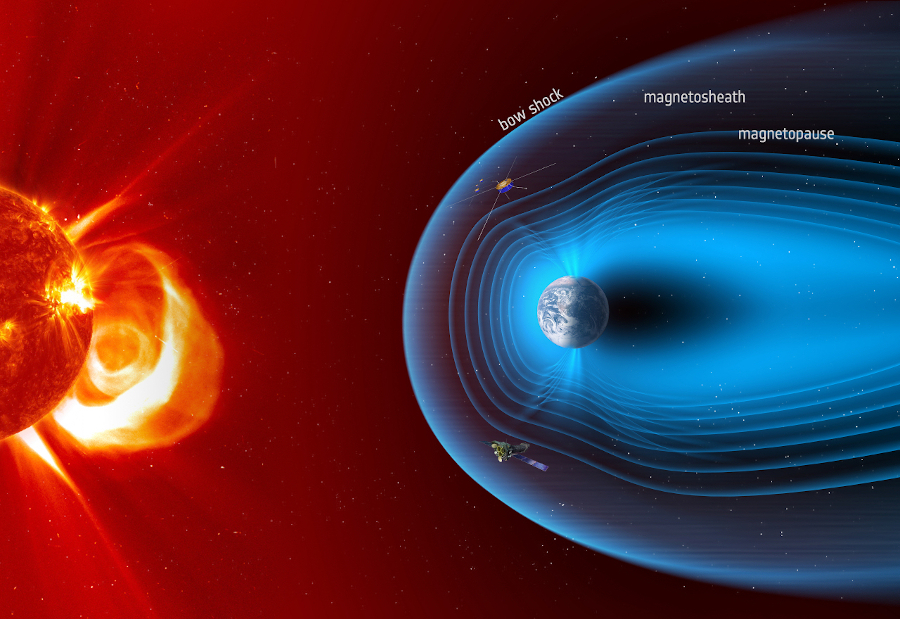
 Credit: ESA/ATG medialab
Credit: ESA/ATG medialab
Working Together to Probe the Magnetosphere
The earth is much like a simple bar magnet, with lines of magnetic force generated by the organized flow of charged particles deep within the earth's interior. The earth's magnetic field forms a magnetic "bubble", the magnetosphere, surrounding the planet. The magnetosphere is vitally important to us, since it protects us from the harmful effects of charged subatomic particles produced by the Sun. Severe geomagnetic storms can be produced when these high-energy solar particles collide with the earth's magnetic field, which can produce beautiful auroral displays, but also damage the sensitive electronic satellites upon which we increasingly depend. As positively-charged subatomic particles from the Sun collide with neutral gas atoms near the earth, the solar particles can steal negatively-charged electrons from the neutral atoms, a process called "solar wind charge exchange", which generates low energy X-rays. Although these foreground X-rays are viewed as a nuisance to astrophysicists, they actually provide important information on the local conditions controlling earth's space weather. Scientists have now used low-energy X-ray data from the XMM-Newton X-ray space observatory, together with measurements from space weather satellites like the Cluster spacecraft, the Japanese Geotail satellite, and solar wind observations from NASA's ACE and WIND spacecraft, to help determine the number of neutral particles near the bow-shock. This number is needed to calibrate detailed space-weather models needed to predict solar storms. It is also a key measurement to help interpret upcoming observations of the magnetosphere to be obtained by the Solar wind-Magnetosphere-Ionosphere Link Explorer (SMILE), a joint European-Chinese observatory designed to study the never-ending battle between solar outbursts and the earth's magnetosphere. The image above is an artist rendering (not to scaled) of the impending collision between a solar mass ejection and the magnetospheric bow shock, showing XMM-Newton toward the bottom of the image within the magnetosphere, and Cluster near the top.
Published: September 5, 2022
<
HEA Dictionary ● Archive
● Search HEAPOW
● Other Languages
● HEAPOW on Facebook
● Download all Images
● Education ● HEAD
>

Each week the HEASARC
brings you new, exciting and beautiful images from X-ray and Gamma ray
astronomy. Check back each week and be sure to check out the HEAPOW archive!
Page Author: Dr. Michael F. Corcoran
Last modified Tuesday, 27-Feb-2024 10:08:21 EST


